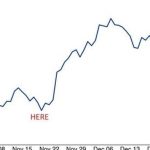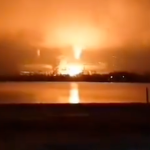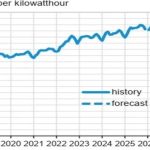EU And Whose Army?
By Benjamin Picton, senior market strategist at Rabobank
Bonds and equities rallied on Friday and Brent crude prices fell by more than 1% as markets digested the details of a 28-point peace plan drafted by US and Russian officials. The most contentious elements of the plan are the recognition of Crimea, Donetsk and Luhansk as being de facto Russian, the requirement for Ukraine to reduce its armed forces to 600,000 personnel (from approximately 800-850,000 currently), a commitment from both NATO and Ukraine that the latter will never be admitted as a NATO member, and the provision for Russia to rejoin the G7 and have sanctions lifted in stages.
In return for formally ceding control of Crimea, Donetsk and Luhansk and renouncing ambitions to NATO membership, Ukraine would receive confirmation of sovereignty (including from Russia) be granted a NATO-style security guarantee from the United States that has been long-sought by Volodomyr Zelenskyy, be granted short-term preferential access to the EU common market, a pathway to EU membership and substantial aid for reconstruction and development – including from $100bn in frozen Russian assets.
President Trump has set a deadline of the Thanksgiving holiday this Thursday for signing the agreement, with the possibility of withholding arms and intelligence dangled as a ultimatum for delay. President Zelenskyy has said that the plan presents an “impossible choice” for Ukraine between a loss of dignity or the loss of a key defence partner. Trump seemed to acknowledge that the deal would be a bitter pill for Ukraine but that Ukrainian concessions were an inevitability if peace was going to be achieved. “He’s [Zelenskyy] going to have to like it, and if he doesn’t like it, then you know, they should just keep on fighting… at some point he’s going to have to accept something.”
It should be pointed out that European politicians have been completely sidelined during this process. Some have balked at the terms and instead proposed alternative plan that is more favorable to their own interests and the interests of Ukraine, but lacks buy-in from the United States or Russia and does not appear to be taken seriously by Ukraine. Others have said that the EU should take the US plan as a starting point and haggle over the details. Once again, Europe’s incoherent and slow-moving political apparatus is being exploited by outside powers to its cost.
Of course, Europe has precious little leverage to inject itself into the negotiations because the defense guarantees critical to the process can only be realistically enforced by the weight of US arms. This was seemingly confirmed by the political reaction to recent comments by top French General Fabien Mandon who said that Europe has “all the knowledge, all the economic and demographic strength to deter the Moscow regime”, but “is not prepared to accept losing its children, [or] to suffer economically because priorities will be given to defense production”. The fear for some European politicians will be that if they do not accede to American terms (especially if they are grudgingly accepted by Ukraine), the United States will simply hand them the keys and tell them that Russia is now their problem to deal with. How does that fit with the “sell America, buy Europe” narrative that was driving markets earlier this year?
This process highlights the extraordinary geopolitical impotence of the EU as it – like Ukraine – has terms imposed upon it from the outside without so much as a “by your leave”. It also highlights the ongoing determination by the administration in Washington to pursue détente with Moscow as it views the Kremlin as a natural partner in the United States’ geopolitical competition with China. This is the noxiN (‘reverse Nixon’) strategy of splitting the junior partner away from the senior.
Consequently, the 28-point agreement also includes provisions for economic cooperation between Russia and the United States, explicitly in the domains of “energy, natural resources, infrastructure, artificial intelligence, data centers, rare earth metal extraction projects in the Arctic, and other mutually beneficial corporate opportunities.” This suits Washington on many fronts, whether it be shoring up its own supply chain vulnerabilities, keeping the EU off-balance, or ensuring that Russia can present a credible check against Chinese dominance of central Asia (where Russian influence has been waning).
Of course, there are also risks here for the United States. Impatience to reach a deal to end the war so that the USA can focus its attentions on the Indo-Pacific risks agreeing to terms that would be too generous to Russia, and effectively vindicate its strategy of using military force to reset the geopolitical order in Eastern Europe. As President Zelenskyy has repeatedly pointed out, Russia has already violated peace agreements numerous times in the past. Would a US defence guarantee be sufficiently credible to deter such violations in the future? Is it credible to believe that Russia is willing to abandon its conception of the Russkiy Mir (Russian World) in the Baltics, the rest of Ukraine and Transnistria? Can Vladimir Putin credibly seek to end a war that has driven rapid growth in real wages and commensurately rapid growth in consumer spending at home?
Striking an agreement that allows Russia to achieve the objectives of its war also risks legitimizing force as a tool of state policy elsewhere. This is an obvious risk in East Asia, where relations between China and Japan are at their most tense in decades as the former accuses the latter of meddling in its internal affairs by saying that it would consider a Chinese invasion of Taiwan to constitute a threat to its own security – and therefore justify a military response. What message will be taken by parties to simmering territorial disputes in the Middle East, or Kashmir, or any number of other geopolitical hotspots?
While the world digested the US-Russia plan for peace in Ukraine another conception of world order was being promoted at the G20 Summit in South Africa over the weekend. The theme of the summit was “Solidarity, Equality, Sustainability”, which sounds very idealistic and perhaps feels a bit 2010s in its optimism for multilateralism in an environment where great powers are embracing realist conceptions of foreign policy. Canadian Prime Minister Carney said that the summit was “a reminder that the center of gravity in the global economy is shifting”, pointing out that it “brought together nations representing three-quarters of the world’s population, two-thirds of global GDP and three-quarters of the world’s trade, and that’s without the United States formally attending.”
While the sums are undoubtedly right, Carney is perhaps glossing over the Achilles heel that is the lack of cohesion among the group’s constituent parts, and also over the degree to which a unified marginal power can still set the agenda globally. After all, it was only in the recent past that the EU had a greater population, larger GDP and conducted more trade than the USA, but who calls the tune in that relationship?
Tyler Durden
Mon, 11/24/2025 – 11:20
Source link











